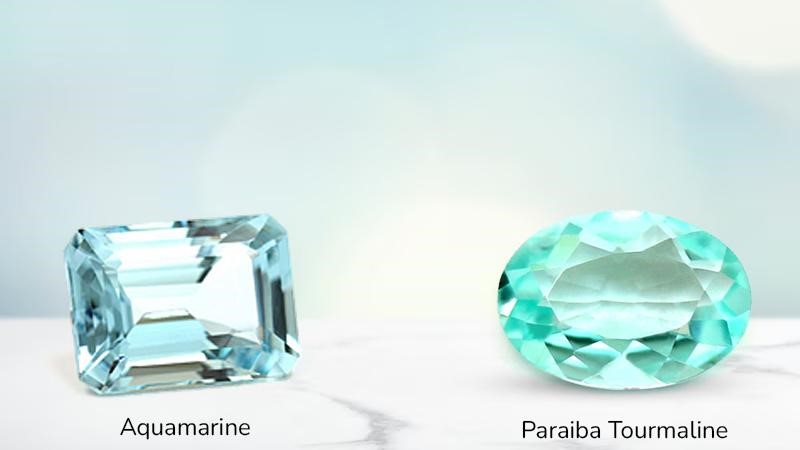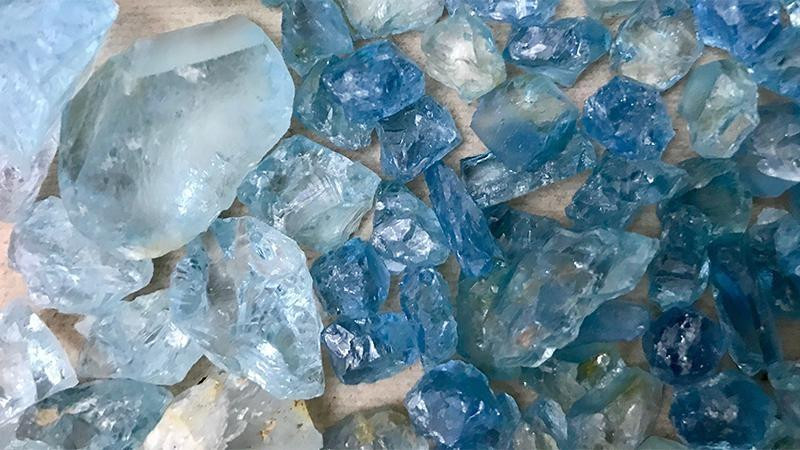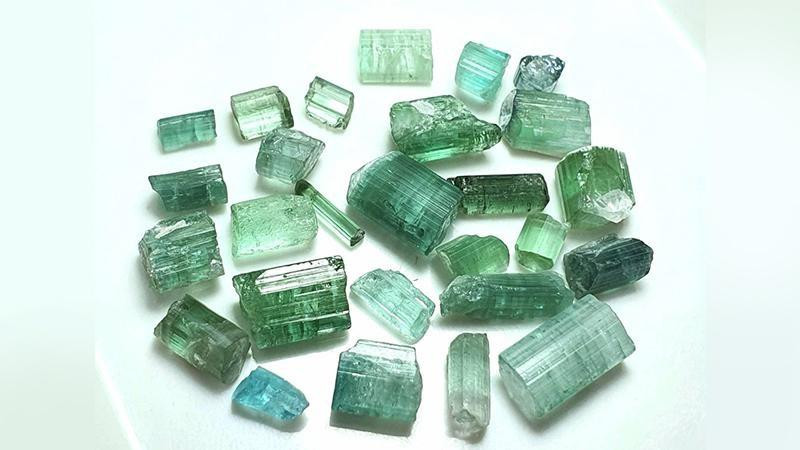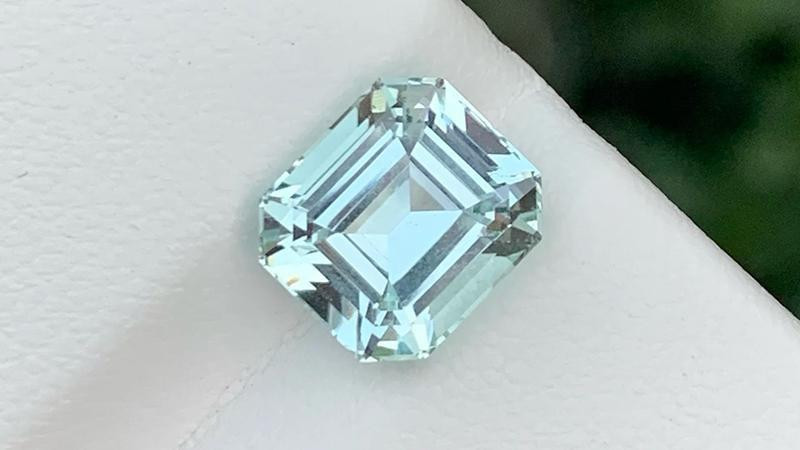The gemstones paraiba tourmaline and aquamarine seem to have an almost identical resemblance at first glance. Both are light blue to emerald blue, although the spectrum of their tints and other characteristics varies. Uncover the differences between aquamarine and paraiba tourmaline to avoid confusion between them.
Formation
A member of the beryl mineral family, aquamarine ranges in color from pale blue to dark blue to greenish-blue. Aquamarine was created in pegmatites, where it spent hundreds of millions of years forming under pressure and heat, just like other gems in the beryl family. The formation of pegmatites happens toward the end of the magma crystallization process.
Heat is produced when mineral-rich rocks and magma beneath the earth’s crust contact, creating gemstones. Pure beryl has no color, but when it reacts with trace amounts of iron, it changes from colorless to entrancing blue and becomes aquamarine.
Elbaite, which is rich in copper and displays a variety of blues and greens, is known as paraiba tourmaline. Although paraiba tourmaline is a comparatively modern discovery in the field of gemstones, it has grown in popularity among jewelers and collectors since it was first made available in the late 1980s.
The formation of paraiba tourmaline in pegmatites is comparable to that of aquamarine and other elbaites. But with significant levels of trace elements of copper and manganese, its crystals develop in unique circumstances. No other tourmaline type contains copper as a coloring ingredient, although iron, manganese, chrome, and vanadium typically generate tourmaline coloring. This phenomenon is unusual for this reason.
Clarity
Compared to aquamarine, Paraiba tourmaline’s clarity is more tolerable. While exceptional clarity in aquamarine contributes to its appeal and is almost universally found in eye-clean form, eye-visible imperfections in Paraiba are not regarded as undesirable characteristics.
Rarity
Paraiba tourmaline takes first place when it concerns rarity. Only three nations—Brazil, Mozambique, and Nigeria—mine it. Comparatively, aquamarine is more common and is found in many places globally, with the biggest reserves being in the Minas Gerais mines of Brazil.
Other countries with aquamarine deposits include Namibia, China, Australia, Madagascar, Tanzania, Myanmar, Nigeria, India, Russia, and the United States. In terms of price per carat, aquamarine is likewise more economical than paraiba tourmaline.
Durability
With a hardness rating between 7.5 and 8, aquamarine is a long-lasting gemstone. While ranking between 7 and 7.5 on the Mohs scale, paraiba tourmaline is a less resilient gem. Although both gemstones are scratch-resistant, the gap in durability is a significant feature that might assist an expert in differentiating between the two.
Moreover, exposure to direct sunshine can damage both paraiba and aquamarine. Exposure to the sun over an extended period can cause the gem’s color to fade. Such a change is irreversible. Long-term heat exposure has the same effects.
Color
Although both, paraiba tourmaline and aquamarine are available in blue and greenish-blue colors, there are a few differences in their hue, color, and intensity that allow us to distinguish between them.
Pure beryl, which contains iron microelements, gives aquamarine its tint. On the contrary, the crystal structure of paraiba tourmaline has significant levels of copper and manganese trace elements.
Paraiba tourmaline has a distinctive blue-green hue that glows with neon due to the variation. Also, the colors in paraiba tourmaline are slightly more intense.
Aquamarine and paraiba tourmaline are both gorgeous gems, each with its appeal. Paraaiba tourmaline is the ideal choice if you’re looking for a rarity and a vivid blue color. Choose an aquamarine if you’re more drawn to a deeper shade of blue, a greater size, or history.
Differences Between Aquamarine and Paraiba Tourmaline
While aquamarine and Paraiba tourmaline have many similarities, there are several key differences between them that set them apart. One of the biggest differences is their color. Aquamarine is typically blue-green, while Paraiba tourmaline has a more vivid blue-green hue. The color of Paraiba tourmaline is caused by the presence of copper and manganese, which gives it a unique and striking appearance.
Another difference between these two gemstones is their rarity and value. Paraiba tourmaline is considered to be one of the rarest gemstones in the world, and as a result, it commands a much higher price than aquamarine. In fact, Paraiba tourmaline can cost up to ten times more than aquamarine, depending on its size, color, and quality.
In terms of their origin, aquamarine is found in many different countries worldwide, including Brazil, Madagascar, and Nigeria. Paraiba tourmaline, on the other hand, is only found in a few select locations, including Brazil, Mozambique, and Nigeria. This rarity and exclusivity only add to its appeal and value.
Which Gemstone is Right for You?
When it comes to choosing between aquamarine and Paraiba tourmaline, there are several factors to consider. If you are looking for a more affordable gemstone with a beautiful blue-green color, aquamarine is an excellent choice.



